Jack Kirby was a comic book superhero. As an artist and writer, he was the essential creator or co-creator behind entire worlds of heroes and villains, interstellar conflicts and what has become billion-dollar franchises. Without him, we would never have known the likes of Captain America, Iron Man, Black Panther, the Hulk, Thor, Dr. Doom, Silver Surfer, and the X-Men, among many others.
Those names have been a dominant force in mainstream Hollywood for most of the last dozen years, but the Kirby creative spark that birthed these characters in the pages of Marvel Comics remains as strange and fascinating as ever.
More from Spin:
- Bruce Springsteen Unloads On Trump At Summer Tour Kickoff
- Simple Minds is Alive and Kicking
- Manager: No New Oasis Album Amid Reunion Tour
“I see people larger than life. That’s the only way I can draw them,” Kirby said in a video interview a year before his death in 1994. “Superheroes came very naturally. That particular form of drawing seemed to represent my ideal of what I like about men and women in general.”
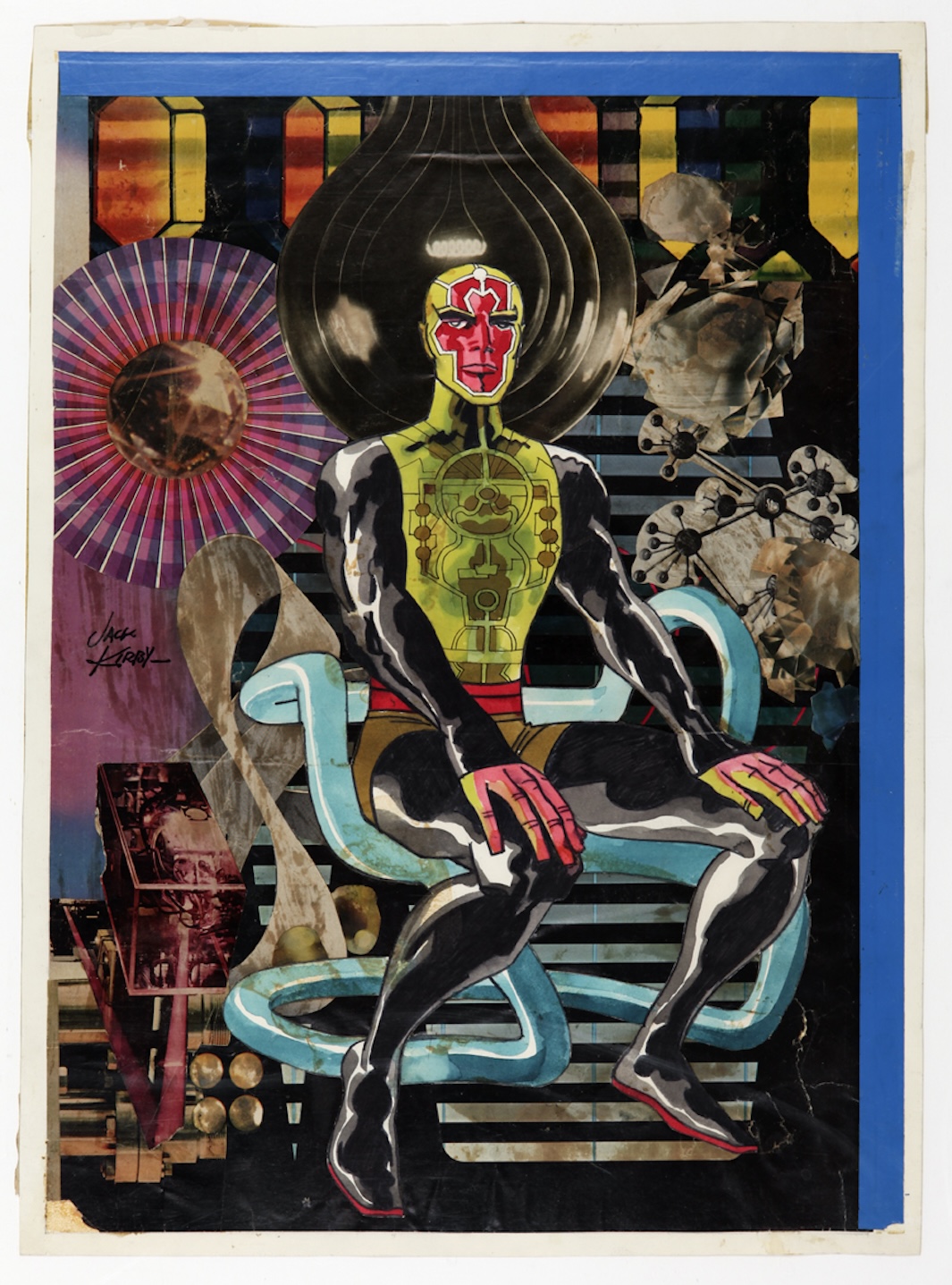
His life and work are the subject of the just-opened Jack Kirby: Heroes and Humanity, a comprehensive retrospective at the Skirball Cultural Center in Los Angeles. It traces the evolution from his earliest work before World War II to his time helping create the Marvel Universe, his later psychedelic comics interpretation of 2001: A Space Odyssey, and a fruitful and mind-expanding period at DC Comics, where he enjoyed greater creative freedom and introduced the cosmic villain Darkseid.
“This is the first time that there’s been a proper career retrospective of this scale in a major American institution for an American comic book creator,” says Patrick A. Reed, a pop culture historian and comics scholar who was one of two independent curators behind the show.
“Kirby is one of the most important American artists of the last 100 years in any medium,” adds his co-curator Ben Saunders, a professor of English at the University of Oregon, and editor of the Penguin Classics Marvel Collection books series. “It would be difficult to name a 20th century artist who’s had an influence across so many fields now in the 21st century. His fame and his reputation are greater now than it has been at any point since his death.”
The curators expect the show to travel around the country once the Skirball exhibition closes March 1, 2026. Among its rare treasures are all 22 original pages drawn by Kirby from X-Men issue No. 7. Alongside the large selection of original art, the show has artifacts like his U.S. Army uniform from World War II, his typewriter and ink bottles, family snapshots and other items gathered from multiple collectors and family members.
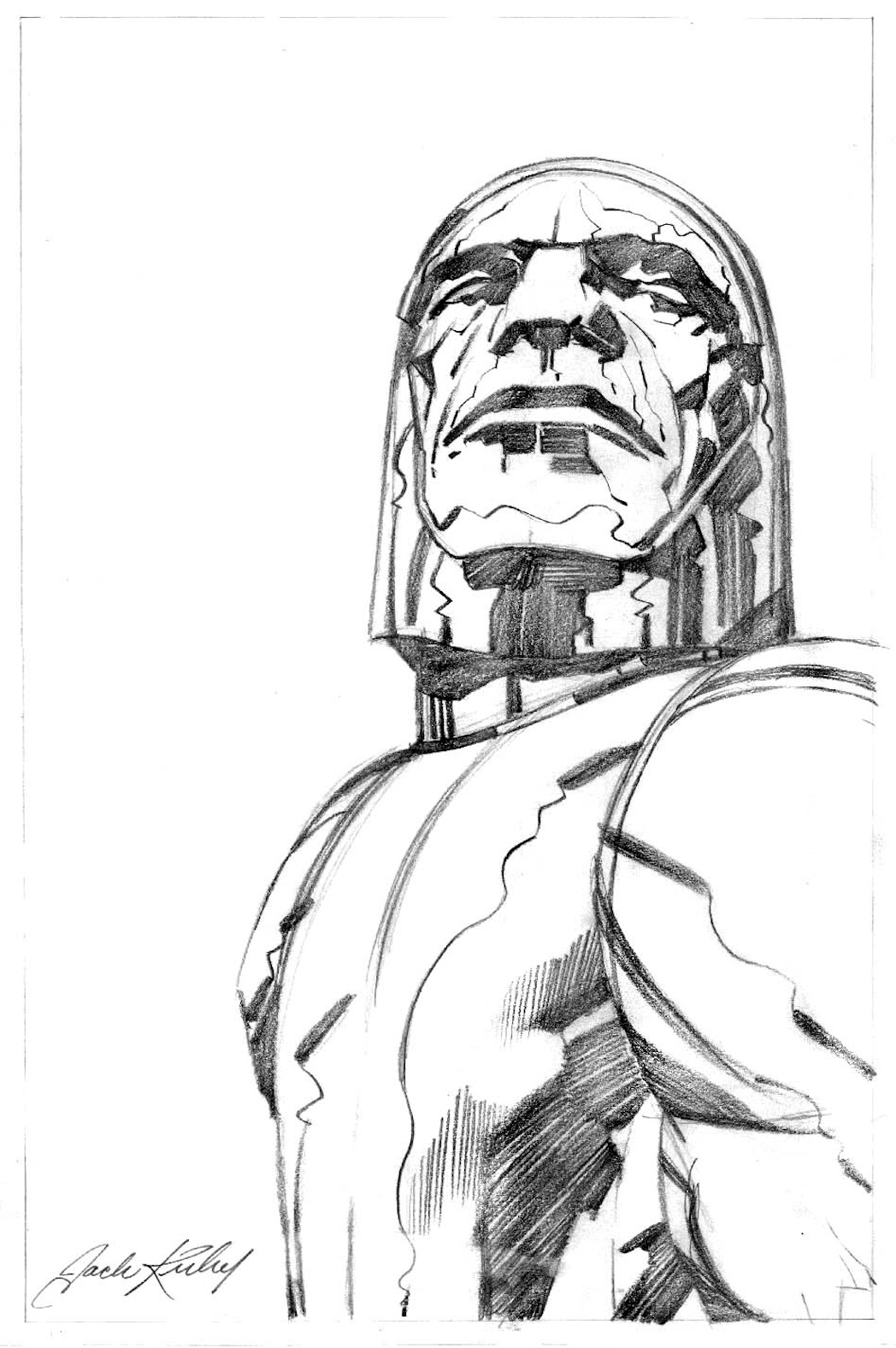
One of the visitors last week was Øystein Runde, a Norwegian comics artist and writer who happened to be in Los Angeles for a wedding. “I almost cried when I discovered yesterday that there was a Kirby exhibition in L.A. just when I was visiting,” he said in the gallery. “I was like, holy shit!”
Runde wore T-shirt that featured his own drawing of David Lynch, inspired by the filmmaker’s death in January. He calls himself a “genre jumper,” and his comics work has ranged from body horror to reimagining the 18th century playwright Henrik Ibsen as part of a team battling against a zombie invasion. As he examined the original Kirby drawings behind glass on the walls, Runde took many detailed pictures with his camera.
“Oh my God. Look at this thing,” he said, leaning toward an old Marvel comics page. “It’s so exciting for me as a craftsman to see his thought processes in his different phases. This is the real deal.”
Kirby’s artwork showed a dramatic expansion in scale over the decades. During his time at Marvel and after, he drew with an increasingly bold and recognizable style, depicting his figures as more formidable and god-like, constructed from block-like shapes and deep shadow.
“He’s both a stylist and a narrative storyteller,” says Saunders. “But then he also starts to get interested in things that are not narrative, but are just pattern, pure form. And I think one reason that he seems to need bigger panels and bigger pages as the career progresses, is that there’s something obsessive about the pattern making and almost delirious drawing that he’s getting into.”
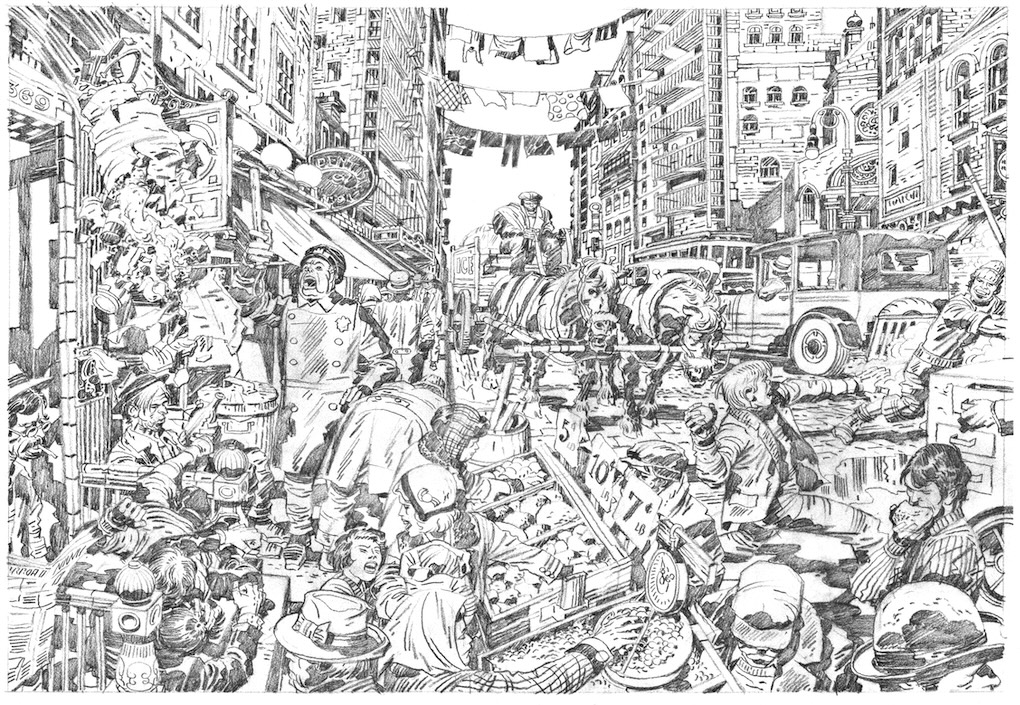
Kirby’s lasting influence can be seen in modern titles like Erik Larsen’s The Savage Dragon, Mike Mignola’s Hellboy, and Gødland, created by Joe Casey and Tom Scioli. But his presence is also felt in the work of novelists Michael Chabon and Rick Moody, filmmakers Guillermo del Toro and the Wachowskis, and the hip-hop visionary MF Doom. And this July in theaters, The Fantastic Four: First Steps will offer a retro retelling of the superhero team’s story, as directed by Matt Shakman (WandaVision).
“He’s the ‘King of Comics,’” says Michele Urton, the Skirball’s organizing curator, quoting Kirby’s nickname. As a former editor at Top Cow Comics herself, Urton points to “the way he’s thinking about space and perspective, and then the way he’s really breaking away from traditional comics and putting together things that didn’t look like anything else that was on the newsstand at the time.”
The Kirby show is the first of three exhibitions devoted to American comics creators at the center. That history fits the Skirball’s mission of celebrating and exploring the Jewish experience. Born Jacob Kurtzberg on New York’s Lower East Side to immigrant parents from Austria, Kirby would sometimes use his art as a setting for meaningful comment on urgent current affairs.
In 1940, he co-created Captain America with writer Joe Simon, and on the cover of issue No. 1, “Cap” is shown punching Adolph Hitler in the face, as a bullet bounces off of his Stars-and-Stripes shield. Scattered around Der Führer and his minions are suggestions of the real-life threat from Nazi Germany, including something labeled “Sabotage plans for U.S.A.”
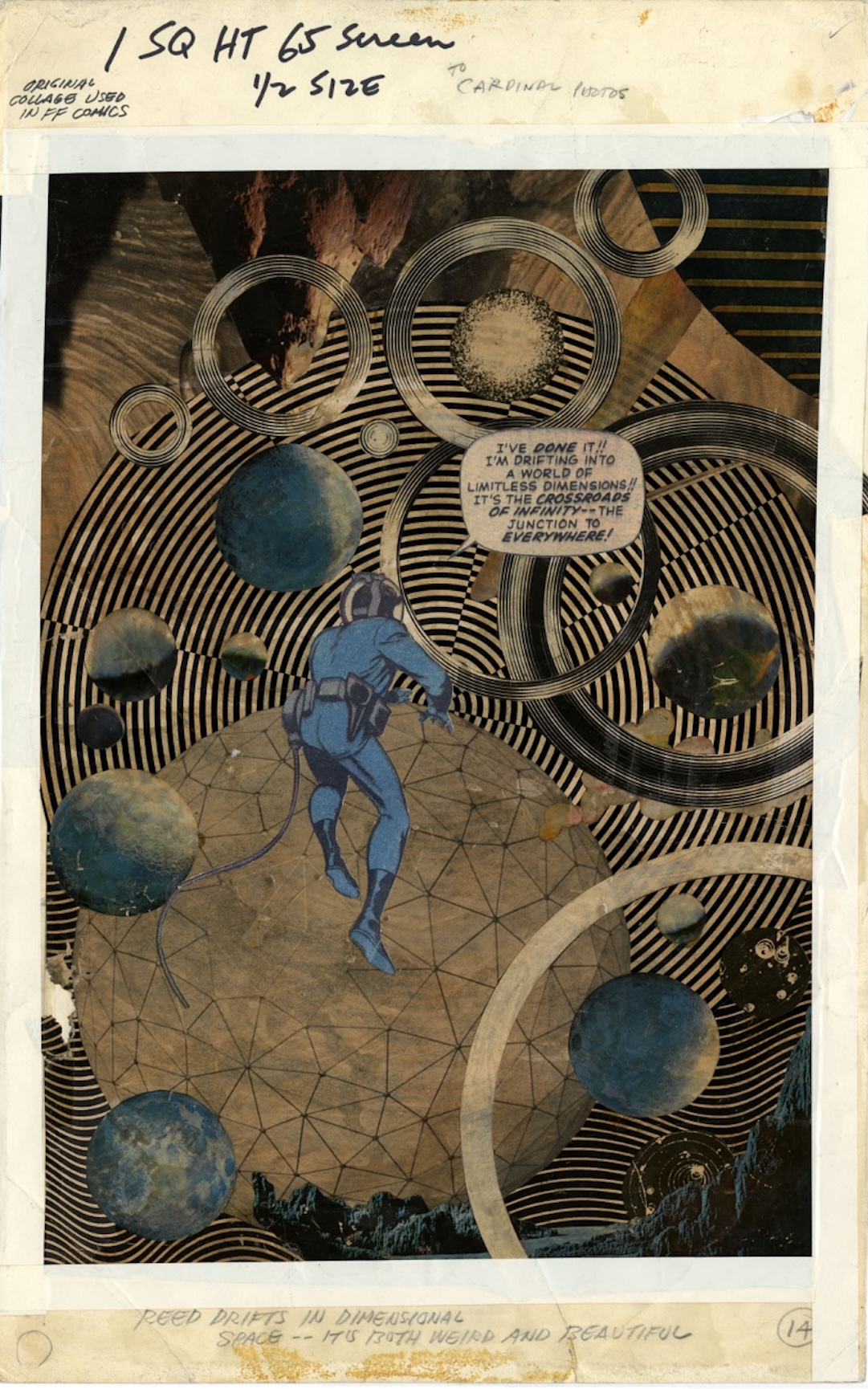
The first issue of Captain America Comics landed on newsstands in December 1940, a full year before the attack on Pearl Harbor, and America’s entry into the war. At the time, there were still strong public feelings for staying out of that war. But in 1939, American Nazis held a now-notorious rally inside Madison Square Garden that didn’t go unnoticed by Kirby and Simon.
“The Nazis came and threw a party in their neighborhood. How could they not react to that?,” asks Saunders.
After the war, Kirby and Simon also pioneered the first comics devoted to true romance and true crime, but the artist ultimately returned to superheroes, touching a popular nerve in 1961 with the Fantastic Four. In that work for Marvel, he co-created many lasting characters with writer-editor Stan Lee.
Decades after Captain America, Kirby co-created the Black Panther in the pages of The Fantastic Four in the summer of 1966, at a time of agitation for civil rights progress. The Black Panther was depicted as royalty in the nation of Wakanda, a technologically advanced society, and was an early example of Afrofuturism.
At the Skirball show is one of the sleek superhero uniforms from the acclaimed 2018 movie Black Panther, starring Chadwick Boseman, which won an Oscar for best costume design for Ruth E. Carter. There is also an early concept drawing of the Black Panther (aka “T’Challa”) that shows him in a very different light, with a more colorful costume, and less of the warrior he became.
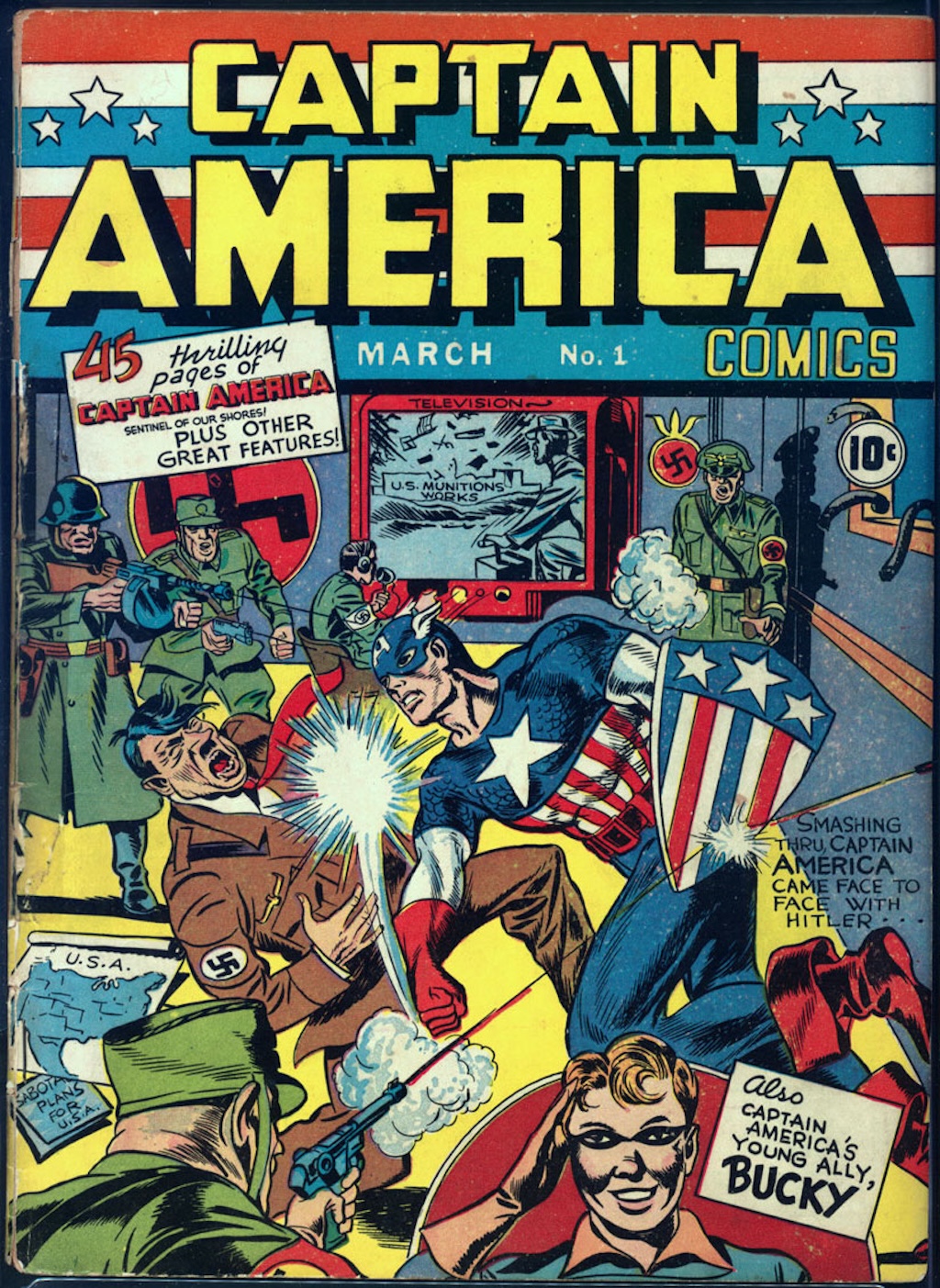
When Kirby moved to Thousand Oaks, California, it coincided with a break with Marvel and his leap to rival publisher DC Comics. He would bounce between the leading comic book companies for his remaining years. At Marvel, he created a 1976 comic adaptation of 2001: A Space Odyssey, eight years after the film’s release. It was wildly experimental and a demonstration of what Saunders describes as a period of when “technology and divinity start to overlap in his imagination.”
Early translations of Kirby’s Marvel stories and characters were low-budget and frequently ridiculous. On one screen in the show, a video loop shows the history of Kirby’s heroes brought to life – from a 1944 Captain America movie serial to a Fantastic Four TV cartoon series, the big-budget Avengers films to the appearance of Darkseid in Zack Snyder’s Justice League in 2021.
While his sometime collaborator Lee lived to see most of these stories come to life in hugely successful Hollywood movies over the last two decades, Kirby did not. He died of heart failure at age 76 in his Southern California hilltop home.
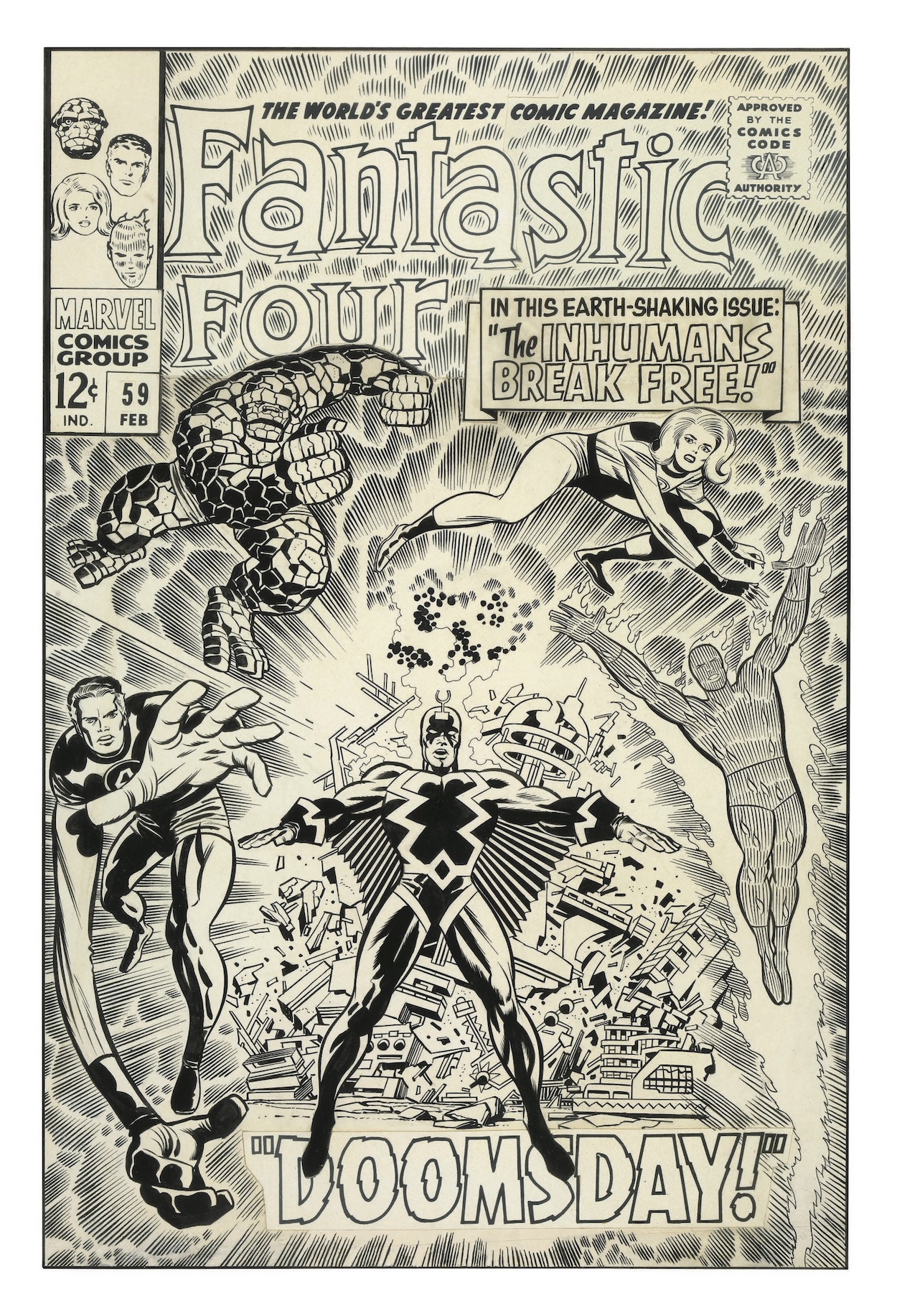
“It’s hard for me to imagine that Jack wouldn’t love the movies. He never lost faith in the mainstream,” says Saunders.
In 2025, modern audiences largely know these characters first through the films, which may overshadow the original work that made the movie and streaming shows possible. But the curators of Jack Kirby: Heroes and Humanity remain confident Kirby’s work will always shine through the hype.
“Kirby’s books are selling month in, month out,” says Reed. “More people know his work now than ever before. The awareness of him as the creative force is growing. I do think there is a danger at times that the modern interpretations can overshadow the classic things, but I also think those new interpretations provide the gateway. They tend to lead people back to the source material. If people resonate with it, they want to find more.”
Visit the Skirball Cultural Center online for more information.
To see our running list of the top 100 greatest rock stars of all time, click here.



